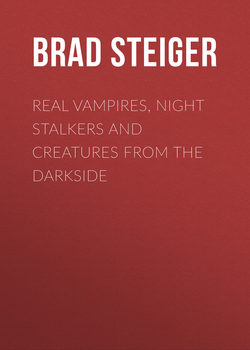Читать книгу Real Vampires, Night Stalkers and Creatures from the Darkside - Brad Steiger - Страница 16
На сайте Литреса книга снята с продажи.
The Contemporary Vampire Mythos: Seductive and Sexy
ОглавлениеAfter Bram Stoker’s novel Dracula (1897) became a popular stage play—and, in 1931, a classic horror film with Bela Lugosi portraying the Count as a sophisticated aristocrat—the image of the vampire as a hideous demon began to transform in the popular consciousness into that of an attractive stranger who possesses a bite that, while fatal, also promises eternal life.
In the decades that followed Lugosi’s iconic appearance as a sophisticated, seductive, hypnotic member of the undead, the vampire of legend—a demonic presence, wrapped in a rotting burial shroud, intent only on sating its bloodlust—gradually became replaced by beguilingly romantic figures.
Anne Rice, who has certainly contributed greatly to the literary rebirth of the vampire as a romantic figure in such novels as Interview with the Vampire, has said that the vampire is an “enthralling” figure. She perceives the vampire’s image to be that of a “person who never dies … [who] takes a blood sacrifice in order to love, and exerts a charm over people.” In her view, the vampire is “a handsome, alluring, seductive person who captivates us, then drains the life out of us so that he or she can live. We long to be one of them, and the idea of being sacrificed to them becomes rather romantic.”
It seems that in the great majority of the current cinematic and literary portrayals of the undead, attractive, buff male vampires and beautiful, seductive female night stalkers drink human blood only from hospital storage units or get along by feasting on animal blood. In certain contemporary variations of the classic tales, the vampires have developed a synthetic bloodlike formula that enables them to avoid the taking of human vital fluid. A number of popular television series have even portrayed conscientious vampires in the roles of police officers or private detectives who defend human society from vicious fanged mavericks who still seek human victims.
The sexual metaphors to be found in the cinematic and literary portrayals of the vampire’s seductive bite are many, and Anne Rice has touched a responsive, atavistic chord in her many enthusiastic readers. In the view of Rice and other authors and screenwriters who have popularized the mythical vampire, the vampire’s overall goals may be incomprehensible to a human being’s limited point of view, but to the undead, human value judgments do not apply to them.
